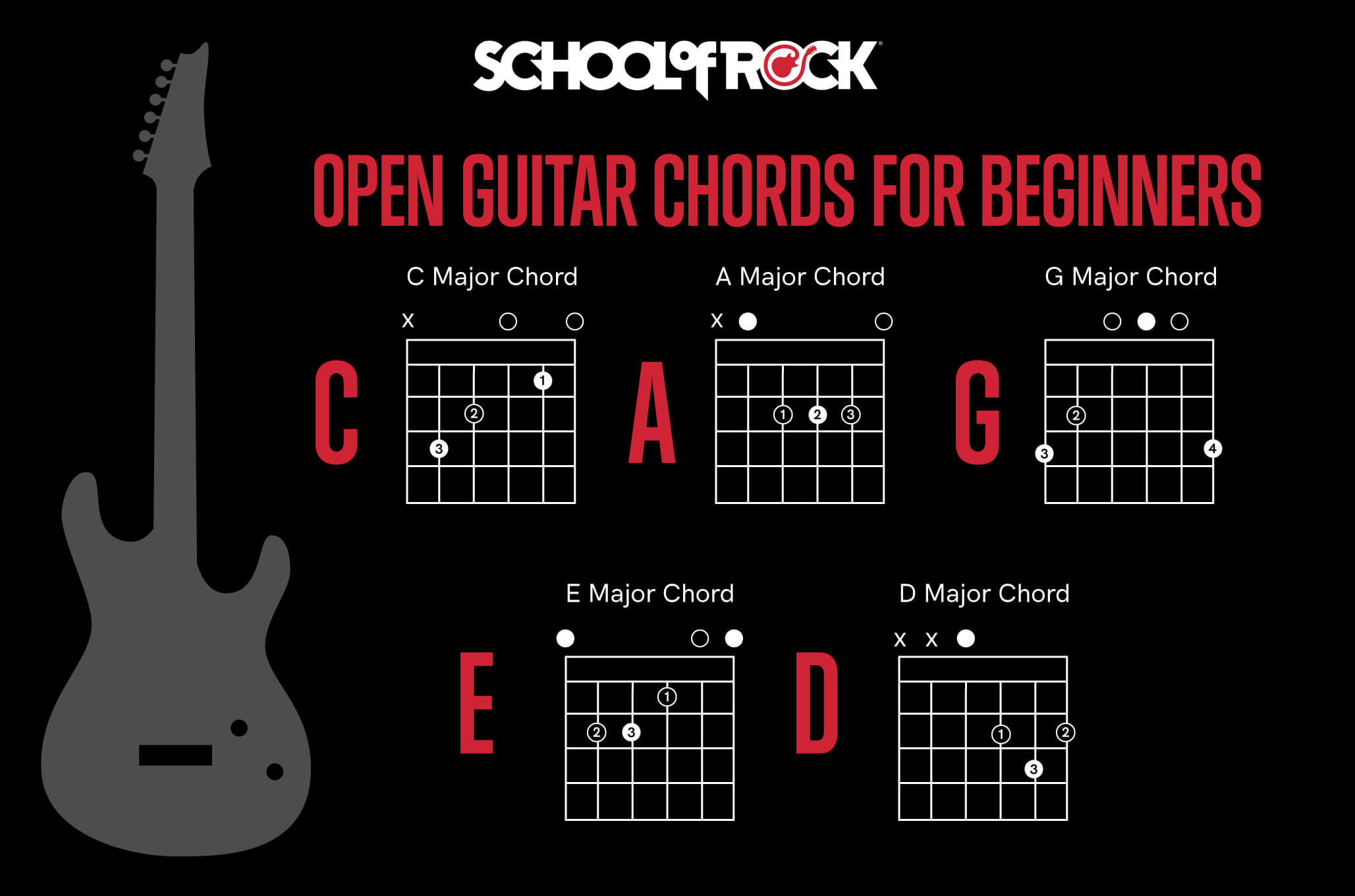
What is a Guitar Chord?
A chord is a combination of two or more notes played simultaneously. On the guitar, chords are usually played by pressing down multiple strings on different frets with one hand while strumming or plucking the strings with the other.
Basic Guitar Chords
Here are some of the most common beginner chords. Each chord diagram below shows the fretboard as if you’re holding the guitar vertically. The vertical lines represent the strings, and the horizontal lines represent the frets. Numbers indicate the fingers you should use:
- E Major (E)
e|---0---
B|---0---
G|---1--- (Index Finger)
D|---2--- (Ring Finger)
A|---2--- (Middle Finger)E|---0---- A Major (A)
e|---0---
B|---2--- (Ring Finger)
G|---2--- (Middle Finger)
D|---2--- (Index Finger)
A|---0---
E|---x---
(x means not to play that string)- D Major (D)
e|---2--- (Middle Finger)
B|---3--- (Ring Finger)
G|---2--- (Index Finger)
D|---0---
A|---x---
E|---x---- C Major (C)
e|---0---
B|---1--- (Index Finger)
G|---0---
D|---2--- (Middle Finger)
A|---3--- (Ring Finger)
E|---x---- G Major (G)
e|---3--- (Ring Finger)
B|---0---
G|---0---
D|---0---
A|---2--- (Index Finger)
E|---3--- (Middle Finger)- E Minor (Em)
e|---0---
B|---0---
G|---0---
D|---2--- (Ring Finger)
A|---2--- (Middle Finger)
E|---0---- A Minor (Am)
e|---0---
B|---1--- (Index Finger)
G|---2--- (Ring Finger)
D|---2--- (Middle Finger)
A|---0---
E|---x---
Tips for Learning Chords
- Finger Placement: Ensure your fingers are pressing down just behind the fret to get a clean sound.
- Practice Transitions: Practice moving from one chord to another smoothly and quickly. Start slow and gradually increase your speed.
- Strumming Patterns: Begin with simple down strums to get used to the chords. As you progress, experiment with different strumming patterns.
- Chord Progressions: Practice common chord progressions (e.g., G – D – Em – C) to help you get used to changing chords in a musical context.
- Consistency: Regular practice is key. Even a few minutes each day can make a big difference.
Practice Songs for Beginners
Start with simple songs that use basic chords. Here are a few popular ones:
- “Knockin’ on Heaven’s Door” by Bob Dylan: G – D – Am – G – D – C
- “Horse with No Name” by America: Em – D6add9/F#
- “Love Me Do” by The Beatles: G – C – D
Conclusion
Mastering basic guitar chords is a crucial step in your musical journey. With consistent practice and patience, you’ll find yourself able to play many of your favorite songs. Keep practicing, and enjoy the process of making music with your guitar. Happy strumming!
Happy playing!

